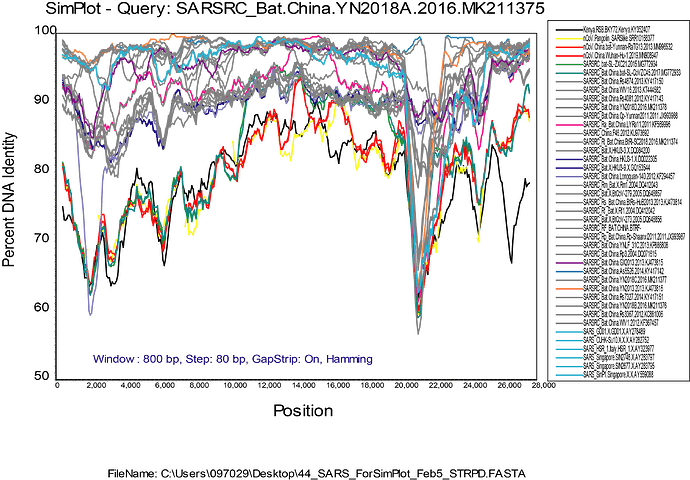I think it is important to keep in mind that the distances and thus the inferred dates of the common ancestors of these “closely related” viruses (RaTG2013 Yunnan Bat, and the pangolin viruses) are quite a way back in the past, as has been discussed on another thread here . These viruses are known to recombine, but I don’t think we have a good idea yet what type of timescale is involved. Do they recombine on average once every 40 years, or once every 400 years? The BioRxiv paper by Lam et al has trees built from subgenomic regions indicating that in many parts of the genome there seem to be two major clades. But recombination between those clades has happened, as is illustrated by the similarity plot of the YN2018A.MK211375 virus attached here.
